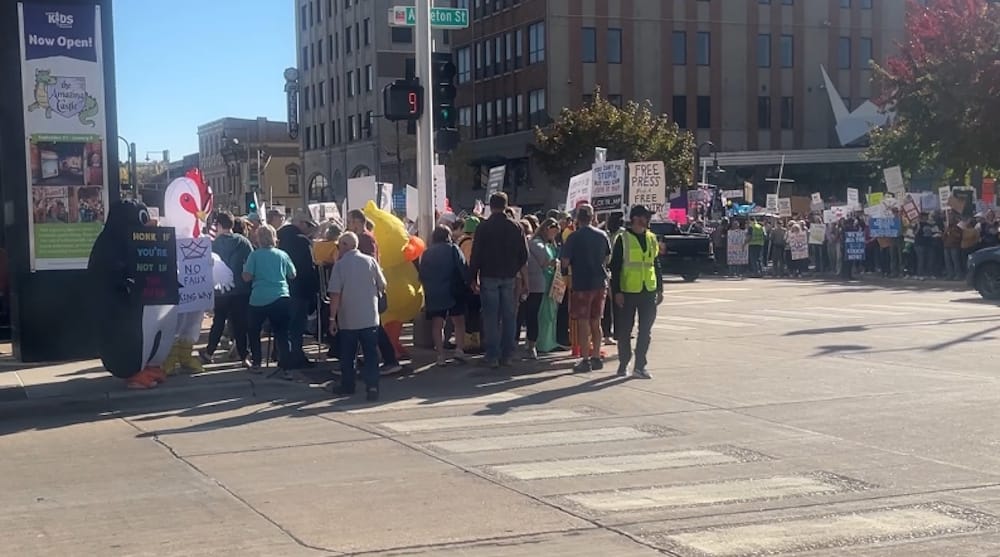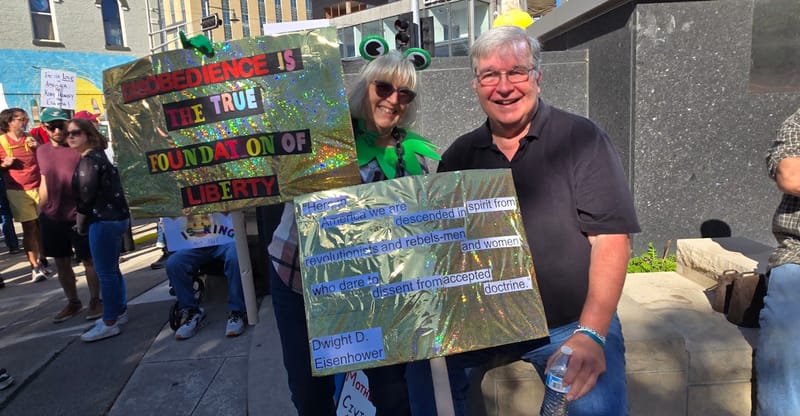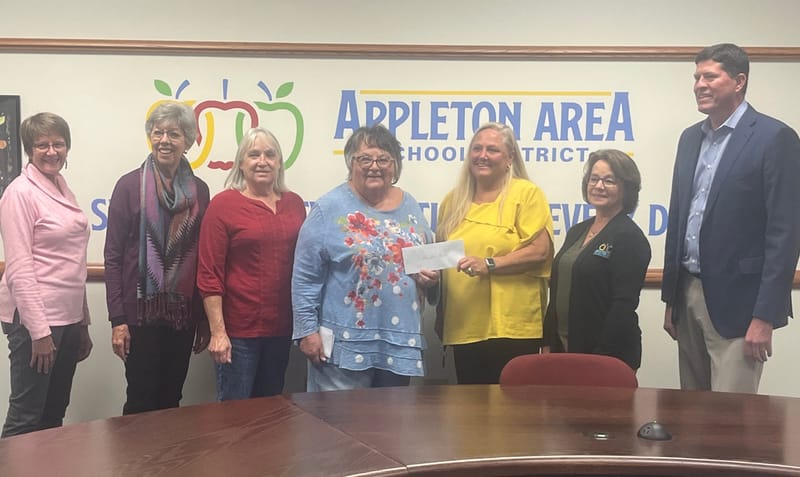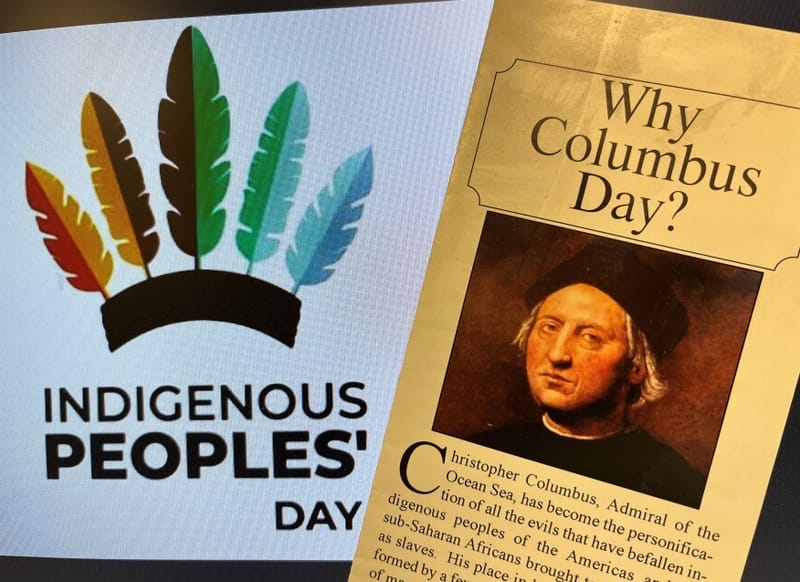Despite heightened political tensions, volunteers report no incidents at No Kings Rally
Forty trained volunteers were on hand to make sure people were safe and to tamp down any potential altercations.

While Republican leaders used apocalyptic language in ascribing motives and potential tactics to the protesters in the weeks leading up to the No Kings Rally, there appear to have been few incidents of note among the estimated 7.5 million Americans across the country who came out on Saturday.
That was certainly the case in downtown Appleton. A group of four Trump supporters bearing a giant banner of the President right in front of Houdini on College Avenue arrived early. But whatever interactions there might have been between them and any of the estimated 4,000 protesters never set off any alarms.
There was only one incident at the Hands Off Rally in April, estimated to be the largest ever turnout for a protest in Appleton before the rally on Saturday eclipsed it.
That altercation took place at the intersection of Appleton and College and involved a man getting out of his car and mixing it up with a protester on the sidewalk. No one was hurt and the scuffle lasted only a matter of seconds before volunteers stepped in to calm the situation. The Appleton Police Department arrested one man.
The volunteers performed exactly as they had been trained: identify a problem and step in to de-escalate, hopefully before it reaches the point it did between the two men. Of course, with crowds in the thousands in a fairly confined five-block stretch and only a dozen volunteers that day, it’s impossible to pre-empt every problem. But marshals are on the lookout at all times, according to volunteer marshal Travis Retzlaff, who has worked both big events.
“Probably the most active part of what we do is keep walkways open and to keep people off the streets so that we don't get shut down for not letting pedestrians go through or blocking businesses,” Retzlaff says. “Stuff like that. You want to make sure people are getting through crosswalks fine.
“But I guess the whole time you're doing that, there is always watching out for public safety interaction between people, or between people and someone driving by that looks like it might escalate. And that's something they emphasize in training: how to de-escalate.”
Nine months into President Trump’s second term in office, the tensions were even higher on Saturday in Appleton. Bigger crowds, heightened passions among the protesters and the presence of potential counter-protesters had volunteers on high alert. This event utilized 40 volunteers.
Yet the worst thing Retzlaff had to report the day after involved his ears.
“Next time I'm bringing ear plugs,” he said with a laugh. “Two hours of car horns when you're standing like right out in the street when they're all going by, that was a bit much. It was nice to have some silence on the way home.”
Still, one photographer recorded video of what appeared to be a motorist driving close to a protester in a crosswalk. He sent the video to Appleton Police Department's Facebook page, and a volunteer wrote down the license plate number.
Retzlaff said even while being mindful of the actions of the crowd and ushering people through crosswalks he was able to take in the full panoply.
“There was the energy from the cars rolling through, which was overwhelmingly positive,” he said. “And there was the energy from the people that were there. You know you're surrounded by like-minded people that are showing up for democracy. They're showing up for something that they believe is worthwhile.
“It's the same thing we feel when we volunteer. So it was really good overall, just people enjoying other people's costumes and signs and it was just a positive experience.”
Retzlaff said the only thing that came close to sparking any urgency among the volunteers was a man who wasn’t paying attention and almost got hit by a car. A marshal was there to pull him out of harm’s way.
“I mean, it was pretty hectic right there at Appleton and College,” Retzlaff said. “There was another guy that went right out into the middle of that intersection and stood in the middle of the traffic. And I think he was wanting people to take the road, block the road. And it was like, no, we are not here for that, and I was yelling at him and trying to get him to move.
“And then another marshal came in and said, I'm going to have to ask you to leave. And he grabbed him by the arm and started walking with him to the curb. And that was like a lesson learned for me. I maybe should have been a little bit more aggressive in getting him out of there.”
All the volunteers underwent training sessions for everything from the proper ushering of people through crosswalks to de-escalation techniques to identifying a potential problem before it becomes a full-blown altercation. Retzlaff said he considers it an honor to forego the thrill of participating in the protest himself in order to provide a necessary service.
“You gotta have the right temperament to do it, and you gotta realize you're really not there to protest,” he said. “My focus is really on all the people there and playing whatever small role I have in making it happen. If you think about it, you’ve got a sacred role in making sure everybody has the ability to do that and everybody's safe.”






